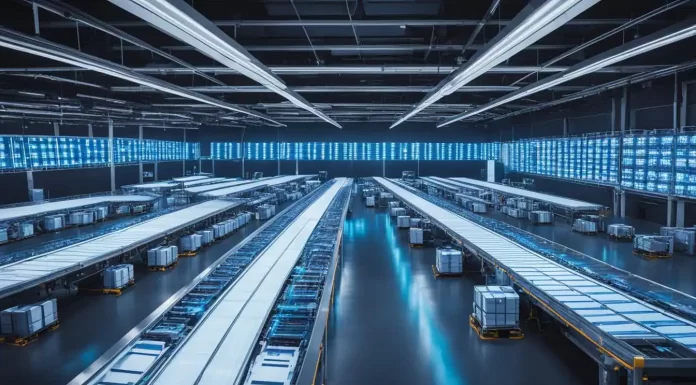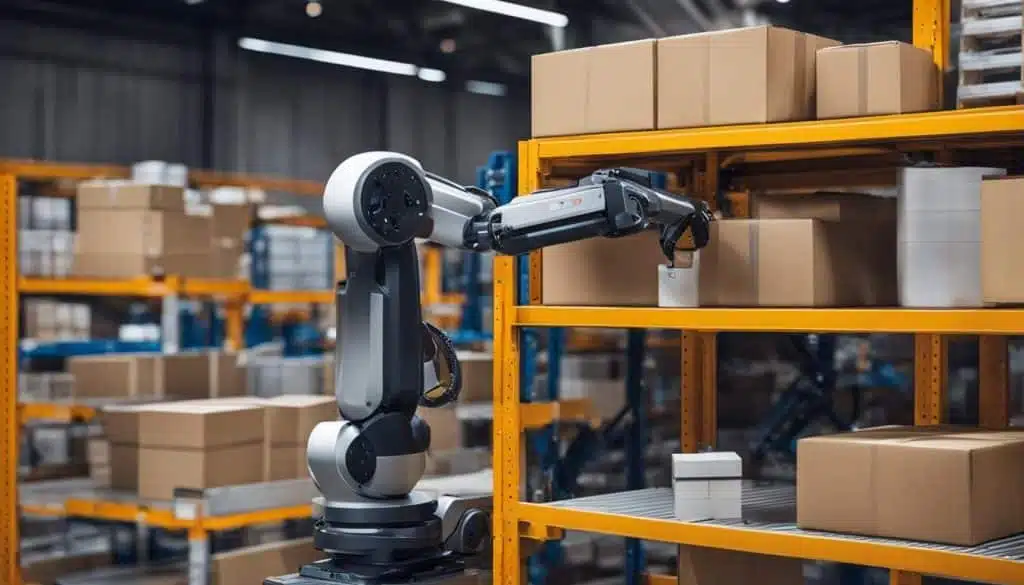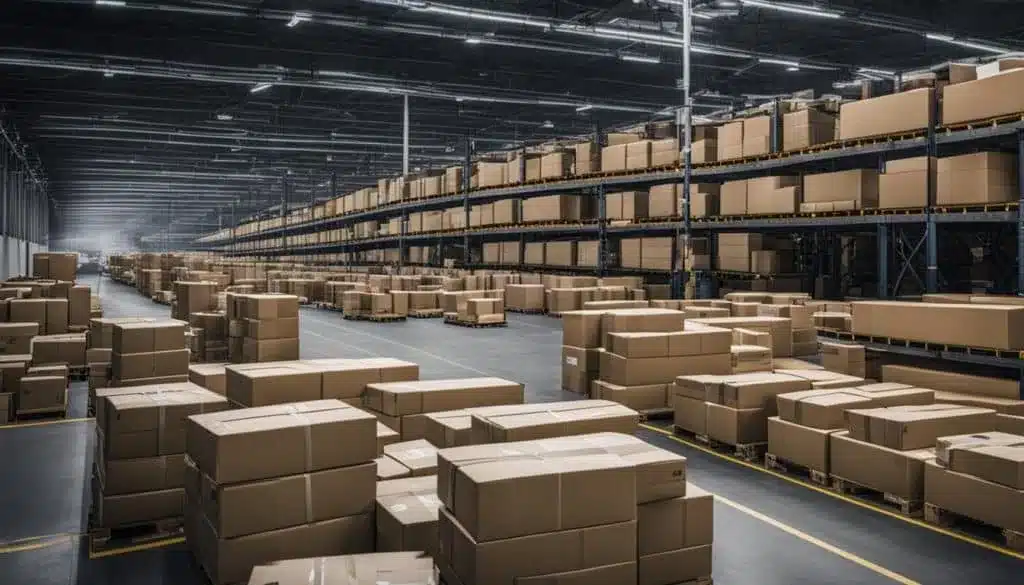Welcome to the first section of our article, where we will explore how automated warehouse technology can help optimize your logistics operations. In today’s fast-paced business environment, efficient logistics management is crucial for maintaining a competitive edge. By embracing automated warehouse technologies, you can streamline your processes, enhance efficiency, and reduce operational costs.
Automated warehouse systems utilize advanced technologies to automate various tasks such as inventory management, order fulfillment, and more. These systems leverage robotics, artificial intelligence (AI), the Internet of Things (IoT), and big data to revolutionize warehouse operations. By implementing these cutting-edge technologies, you can enhance productivity and accuracy while reducing the reliance on manual labor.
Automation not only simplifies your operations but also optimizes your logistics processes. It enables seamless data integration and analysis, allowing you to make data-driven decisions and improve overall efficiency. With automated warehouse technology, you can achieve faster order processing, accurate inventory management, and efficient e-commerce fulfillment.
By embracing these innovations in logistics, you can optimize your supply chain and stay ahead in today’s competitive market. In the next sections, we will discuss in detail the different aspects of automated warehouse technology, including the key technologies driving automation, the benefits of adopting these systems, and the challenges and considerations in implementing them.
Stay tuned for the upcoming sections as we delve deeper into the world of automated warehouse technology and explore its vast potential in optimizing logistics for your business.
Table of Contents
Automated Warehouse Technology in Modern Logistics
In today’s fast-paced world of modern logistics, businesses are increasingly turning to automated warehouse technology to enhance their operational efficiency. This section provides an overview of how automated warehouse technology has evolved over time and its significant impact on the effectiveness of logistics operations.
Automated warehouse technology refers to the implementation of advanced systems and machinery to automate various processes within a warehouse. These technologies have proven to be game-changers for businesses, enabling them to optimize their operations, improve productivity, and reduce costs.
One key aspect of automated warehouse technology is the use of robotics. Robots are capable of performing repetitive and labor-intensive tasks with precision and consistency, eliminating the need for human intervention in these tasks. This not only streamlines warehouse operations but also reduces the risk of errors and enhances overall productivity.
Another crucial component of automated warehouse technology is the integration of artificial intelligence (AI). AI-powered systems can effectively analyze vast amounts of data in real-time, providing valuable insights for inventory management, demand forecasting, and resource allocation. This allows businesses to make data-driven decisions and optimize their supply chain processes.
The Internet of Things (IoT) is also a key enabler of automated warehouse technology. By connecting various devices and systems within the warehouse, IoT enables seamless communication and data exchange. This integration facilitates real-time tracking of inventory, equipment status monitoring, and predictive maintenance, enhancing operational efficiency and minimizing downtime.
With the advancements in big data analytics, businesses can harness the power of data to gain valuable insights into their supply chain operations. By analyzing data from various sources such as customer orders, inventory levels, and transportation routes, businesses can make informed decisions to optimize their logistics processes, improve customer satisfaction, and reduce costs.
Overall, automated warehouse technology plays a pivotal role in modern logistics, revolutionizing traditional warehouse operations and paving the way for enhanced efficiency, accuracy, and scalability like warehouse management system. By adopting these technologies, businesses can stay competitive in today’s dynamic market, meet customer demands effectively, and drive growth.
HashMicro offers a comprehensive Warehouse platforms. It has complete features to help the company streamline inventory management, with advanced technology. If you’re curious for more detailed information, you can download the price scheme below.

Key Technologies Driving Warehouse Automation
In today’s rapidly evolving logistics landscape, warehouse automation is playing a crucial role in optimizing operations and driving efficiency. Key technologies such as robotics, AI, IoT, and big data are at the forefront of this transformation. Let’s explore how these technologies are revolutionizing warehouse automation.
Robots are increasingly being used in warehouses to perform repetitive tasks with precision and speed. These autonomous machines can handle material handling, stacking, and sorting, allowing human workers to focus on more complex tasks. By leveraging robotics, warehouses can streamline processes, improve productivity, and minimize errors.
Artificial intelligence (AI) is another game-changing technology in warehouse automation. AI-powered systems can analyze vast amounts of data in real-time, enabling predictive analytics and efficient decision-making. With AI, warehouses can optimize inventory management, enhance demand forecasting, and improve overall operational efficiency.
The Internet of Things (IoT) is also driving warehouse automation by connecting various devices and sensors throughout the warehouse. IoT enables real-time tracking of inventory, equipment, and workforce, providing valuable insights into operations. By harnessing IoT, warehouses can optimize workflows, minimize downtime, and ensure seamless coordination across the supply chain.
Furthermore, big data analytics plays a crucial role in warehouse automation. By leveraging advanced analytics tools, warehouses can analyze large volumes of data generated by various systems and processes. This enables data-driven decision-making, predictive maintenance, and improved overall performance.
In conclusion, the key technologies driving warehouse automation – robotics, AI, IoT, and big data – are revolutionizing how warehouses operate. These technologies enable streamlined processes, efficient inventory management, and data-driven decision-making, leading to enhanced productivity and reduced operational costs. As the logistics industry continues to evolve, embracing these technologies will be crucial for businesses to stay competitive in today’s fast-paced digital world.
Benefits of Adopting Automated Warehouse Systems
When it comes to streamlining warehouse operations, adopting automated warehouse systems can bring a multitude of benefits to your business. These systems are designed to enhance efficiency, boost productivity, improve accuracy, and reduce operational costs. Let’s explore some of the key advantages that automated warehouse systems offer:
1. Increased Efficiency
Automated warehouse systems optimize the entire warehousing process, from inventory management to order fulfillment. By automating tasks that were previously done manually, such as picking, sorting, and packing, these systems can dramatically increase the speed and precision of operations. As a result, you can handle a higher volume of orders in less time, leading to improved overall efficiency.
2. Enhanced Productivity
With automated systems in place, your warehouse staff can focus on more value-added tasks rather than mundane and repetitive activities. By automating labor-intensive processes, such as inventory tracking and replenishment, you can free up your workforce to tackle more strategic responsibilities. This ultimately leads to higher productivity levels and enables your business to meet customer demands more effectively.
3. Improved Accuracy
Manual data entry and handling can be prone to errors, which can result in inventory discrepancies, misshipments, and dissatisfied customers. Automated warehouse systems utilize advanced technologies such as barcode scanning, RFID tagging, and real-time data integration to ensure accurate and precise inventory management. By reducing human error, these systems greatly enhance order accuracy and customer satisfaction levels.
4. Reduced Operational Costs
Implementing automated warehouse systems can lead to significant cost savings for your business. By automating labor-intensive tasks, you can reduce the need for manual workforce, leading to lower labor costs. Additionally, these systems enable optimized inventory management, reducing the risk of overstocking or stockouts, which can result in wastage or missed sales opportunities. By minimizing these inefficiencies, you can effectively lower your operational costs and maximize profitability.
By adopting automated warehouse systems, you can harness the power of technology to streamline operations, enhance efficiency, and achieve significant cost savings for your business. These systems deliver increased efficiency, enhanced productivity, improved accuracy, and reduced operational costs – all of which contribute to the overall success of your warehouse operations.
Automated Warehouse Strategies for E-commerce Fulfillment
In today’s digital age, e-commerce has become an integral part of the retail landscape. With the exponential growth of online shopping, businesses are constantly seeking ways to enhance their e-commerce fulfillment process. This is where automated warehouse strategies come into play, offering a solution that enables fast and efficient order processing, seamless inventory management, and integration with e-commerce platforms.
Implementing automated warehouse strategies allows businesses to meet the growing demands of online customers by ensuring quick and accurate order fulfillment. With automation, order processing times are significantly reduced, resulting in improved customer satisfaction and increased sales.
Efficient inventory management is another key aspect of automated warehouse strategies. By automating inventory processes such as stock replenishment and tracking, businesses can optimize their inventory levels, minimize stockouts, and reduce excess inventory. This not only improves operational efficiency but also helps businesses save costs by eliminating the need for manual inventory checks.
Furthermore, automated warehouses can seamlessly integrate with e-commerce platforms, allowing real-time synchronization of data between the warehouse and the online store. This integration enables automatic order updates, inventory availability checks, and accurate shipping information, providing customers with a smooth and transparent shopping experience.
With automated warehouse strategies, businesses can streamline their e-commerce fulfillment process, ensuring fast and accurate order processing, efficient inventory management, and seamless integration with e-commerce platforms. By embracing automation, businesses can stay competitive in the ever-evolving e-commerce landscape and meet the growing expectations of online customers.
Challenges and Considerations in Implementing Automation
Implementing warehouse automation presents businesses with a unique set of challenges and considerations. Before embarking on this transformative journey, it is crucial to carefully evaluate various factors to ensure a successful implementation. By addressing these challenges and considerations, businesses can maximize the benefits of automation while minimizing potential setbacks.
One of the primary considerations is the initial cost of implementing automation in your warehouse. While the long-term benefits may outweigh the upfront investment, it is essential to assess your budget and determine the financial feasibility of automation. Conducting a comprehensive cost-benefit analysis will help you make informed decisions and allocate resources effectively, ensuring a smooth implementation process.
Another critical consideration is the adaptation and training of your workforce. The introduction of automation technologies may require your employees to acquire new skills or adapt to new work processes. Providing adequate training and support will not only equip your workforce to operate seamlessly alongside automated systems but also contribute to a positive and collaborative work environment.
Compatibility with existing systems is another aspect that must not be overlooked. Integrating automation into an established warehouse environment requires careful planning and consideration of your current infrastructure. Assessing the compatibility of the automation system with your existing software, hardware, and processes will help avoid any disruptions and ensure a seamless transition.
Furthermore, it is crucial to consider the scalability of your chosen automation solutions. As your business grows and evolves, the automation system should be capable of accommodating future needs and expansion. Evaluating the scalability of the technology and the capacity to integrate additional features or upgrade existing ones will help future-proof your warehouse operations.
Exploring On-Demand Trends and Green Warehousing Initiatives
As the logistics industry continues to evolve, it is crucial for businesses to stay ahead of on-demand trends and embrace the transformative power of green warehousing initiatives. On-demand trends, driven by the increasing expectations of customers, have revolutionized the way warehouses operate. By leveraging warehouse automation, companies can efficiently meet the growing demands of customers while optimizing their operations.
One of the key on-demand trends in warehouse automation is the integration of advanced robotics and AI technologies. These technologies enable faster and more accurate order processing, reducing turnaround times and enhancing customer satisfaction. With automated systems, businesses can streamline their operations, minimize errors, and maximize efficiency throughout the order fulfillment process.
Furthermore, green warehousing initiatives have gained significant importance in recent years due to increasing concerns about environmental sustainability. By embracing warehouse automation, companies can actively contribute to sustainable practices in their logistics operations. Automated systems, such as energy-efficient conveyors and optimized inventory management software, minimize waste, reduce energy consumption, and lower carbon emissions. This not only benefits the environment but also improves operational efficiency and reduces costs for businesses.
By incorporating on-demand trends in warehouse automation and green warehousing initiatives, businesses in the Philippines can create a competitive edge and meet the evolving needs of their customers. Embracing these progressive approaches not only enhances operational efficiency but also demonstrates a commitment to sustainability, which resonates positively with environmentally conscious consumers. With the right technology and forward-thinking strategies, businesses can optimize their logistics operations, reduce their environmental impact, and position themselves as leaders in the industry.

























